
portraits.uk.net 2010-13
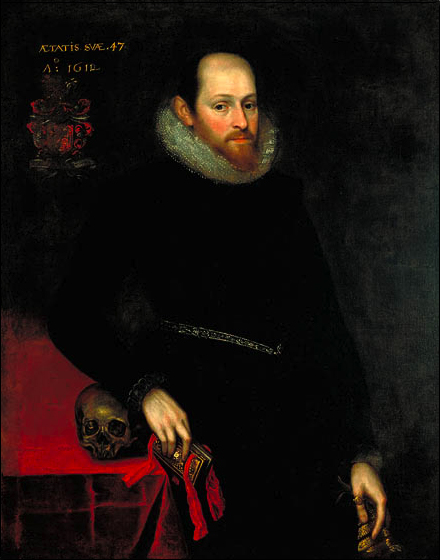
This article presents the contending Elizabethan (contemporary) portraits of SHAKE-SPEARE.
The apparent discrepancy between the great effort to preserve the poet in print, but not in portrait, is redressed.
Substantial evidence points to Edward de Vere, 17th Earl of Oxford as the main writer - see below and links -
there are virtually no archival references or correspondance to substantiate the actor William Shakspere of Stratford.
Portraits.uk.net is not interested in limiting perceptions /'taking sides' ('Oxford/Stratford') - only the facts and truth.
DE VERE was an Elizabethan Courtier-Extraordinary; highly capable, well educated and travelled - a poet, patron of the arts and producer of plays / entertainments for the Court and then Public theatre (circa 1580 -1600).
There are good reasons to suspect that the main body of his work was published pseudonymously.
Can the same 'voice' / clear mind as the poet 'SHAKESPEARE' be heard on reading his Juvenilia or Correspondances...?
Is it just coincidence that so many of his life-experiences corroborate so closely with events in the plays ? *
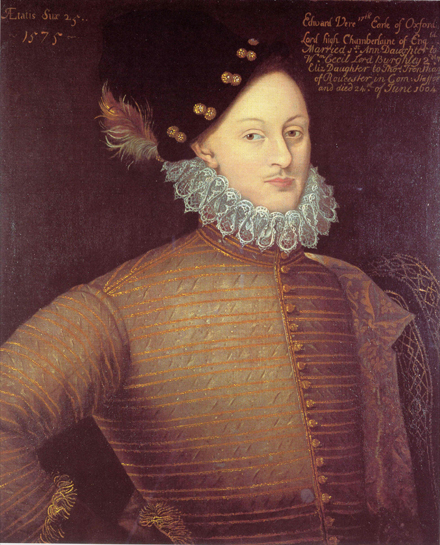
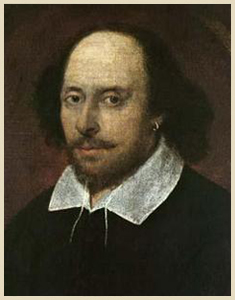
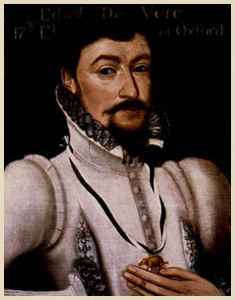
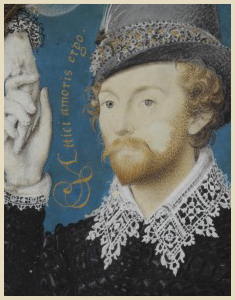
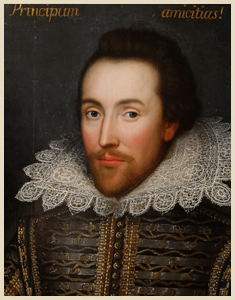
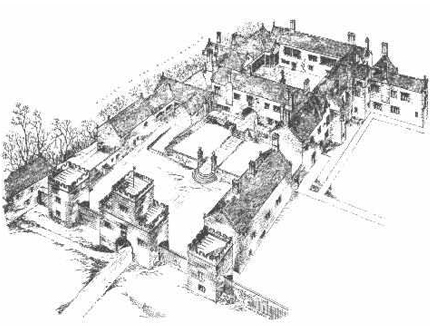
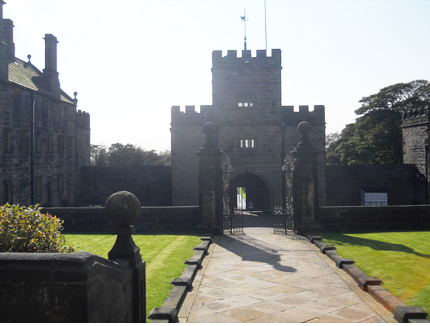
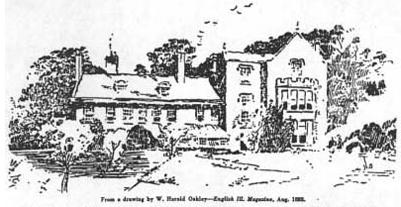
Shakspere, son of an illiterate 'commoner', left school at 14, married in 1582, fathered 3 children (1583, 1585) and then - a gap in the records ...until he bought 'New Place' in 1597, and was referred to as part-leaseholder of the Globe theatre (1599) in a document dated 1616 - he was also recorded as being a grain merchant.
He apparently left no letters to his wife - left his daughters seemingly illiterate...
In TRUTH, none of the documents relating to the Stratford family even HINT that he was a playwrite ON FIRE....
Vere mentions Pallas in his Juvenilia - the Greek goddess 'shook her spear' in various Classics (Homer, Virgil, etc.) -
A third of the Quartos state 'SHAKE-SPEARE' as author - as do the Sonnets.
The sonnets are 'by our ever-living poet' (an aristocratic writer) - implying posthumous publication in 1609.
And while no posthumous publishing rights for any plays were sought by Shakspere's family - it was Vere's relatives who were involved publishing the First Folio (of 34 collected works with 17 previously unreleased plays) in 1621-3.
34, twice Oxford's Earldom, is also the key to the monument Cipher - (Henry VI parts 1, 2 & 3 considered as 1 piece)
from Earl of Southampton's Estate
• Juvenilia and Correspondance of the 17th Earl of Oxford >here<
• Oxford - Will Shakspere factual comparisons >here<
• The Play/Life 'mirror' elaborated (how De Vere spent his fortune on patronage, etc.) >here<
• 'Shakespeare Suppressed: The Uncensored Truth...' by Katherine Chiljan, with new in depth research >here<
• Questions about Vere's midsummer death date >here< ...Oxford's Geneva Bible >here<
• Hampton Court >here< ....on Poet Ape >here<
• Ben Johnson's Stratford monument CIPHER ...stunning research, thanks to William Ray >here<
Portraits.uk.net is not interested in limiting perceptions.... only the facts and truth.
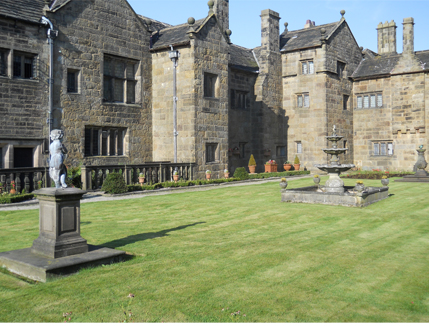
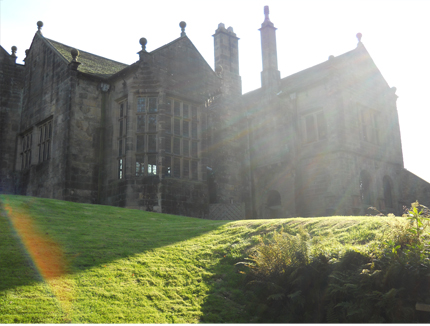
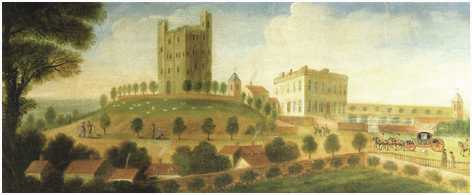
PERHAPS more significantly, the writer of SHAKESPEARE exhibits a high degree of specialised knowledge -
of many languages, ancient philosophers and dramatists, the law, the Bible, horticulture, even medicine (pharmacology) and astronomy (with astrology) - all these are reflected in the works - a diverse range of rare knowledge that, talent notwithstanding, would have required equally RARE AND SELECT TRAINING....
Whilst no evidence proves that Shakspere of Stratford received any such education - De Vere studied these very subjects from an early age with his tutor, Sir Thomas Smith - a man who through his own 'startling abilities' had become a leading light at Cambridge, expert in languages, oratory and the law. (Smith was Edward VI's Secretary prior to tutoring De Vere and, after 8 years training the Earl, became Elizabeth I's Principal Secretary.)
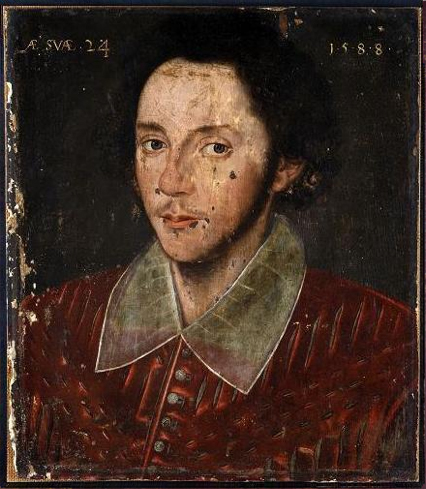
The 'Grafton' portrait, pre 'restoration';
date coincides with W. Shakspere 1564-1616
and Earl of Essex, R. Devereux
1565-1601
"Not mine own fears, nor the prophetic soul Of the wide world dreaming on things to come,
Can yet the lease of my true love control, Suppos'd as forfeit to a confin'd doom.
The mortal moon hath her eclipse endur'd, And the sad augers mock their own presage;
Incertainties now crown themselves assur'd, And peace proclaims olives of endless age.
Now with the drops of this most balmy time My love looks fresh, and Death to me subscribes,
Since spite of him I'll live in this poor rhyme, While he insults o'er dull and speechless tribes.
And thou in this shalt find thy monument,
When tyrants' crests and tombs of brass are spent."
over-painting partly removed, to reveal lost Ketel portrait of De Vere / SHAKESPEARE?
The 'Welbeck' portrait of Edward Vere,
Lord high Chamberlaine of England, 1550-1604;
an 'accurate contemporary copy' of lost original from De Vere's 1st 'Grand Tour' ... or an insipid reconstruction based on the 'Ashbourne' ?
...Could a 'commoner' have gained such court-life insight as SHAKE-SPEARE presents in the first place?
The writer would surely have seen first hand - unless he guessed correctly (convincingly) time after time.
And the lives of the Aristocracy were far removed from ordinary serfdom.
An example of their environment can be seen at the De Houghton's Tower -(associated with 'W Shakeshafte' 1580/1):
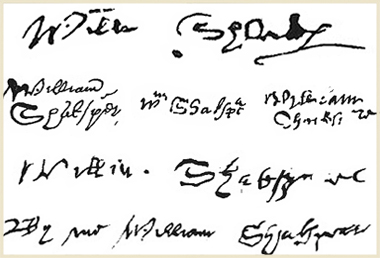
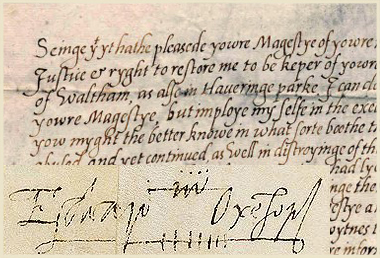
- is this autograph consistent with a seasoned writer?
"whatsoever he penned, he never blotted out a line"
- Ben Johnson on 'Shakespeare'.
Did Shakspere simply collude / capitalise as the front-man when the Court plays went Public - (Johnson's 'poet-ape')
.... was it that political circumstances prevented Edward de Vere from openly revealing his hand?
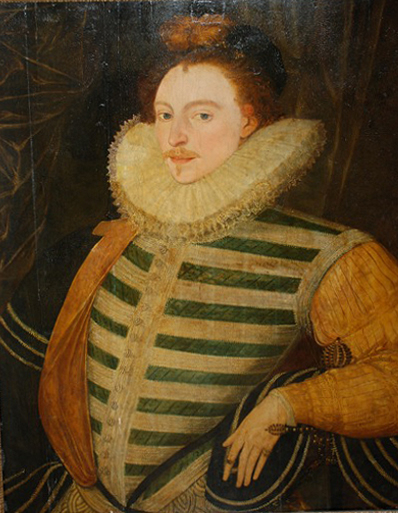
"Shakespeare Suppressed":
Edward de Vere, 17th Earl of Oxford
(with performer's painted face).
This stunning portrait exhibits technical brilliance in a style consistent with the Elizabethan Court painter, Cornelis Ketel.
Thanks to Katherine Chiljan © - see Link below for further detail.
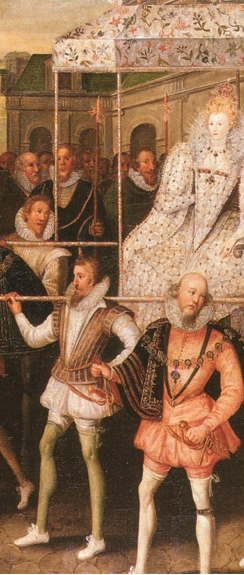
The first publications of 'WILLIAM SHAKESPEARE' were the 1593-4 Venus & Adonis/ Lucrece poems - but at least a dozen of the plays had been performed by that time; sixteen were later published as the Quartos between 1597-1604.
'Shakespeare' is listed as an actor 4 times (with the Lord Chamberlain's Men) - 1 secondary reference lists Shakspere.
Unfortunately, many records which could shed more conclusive light on the birth of the English Theatre were 'lost'.
And NO Shakespeare (or Shakspere) correspondance /manuscripts exist - only six differing signatures:
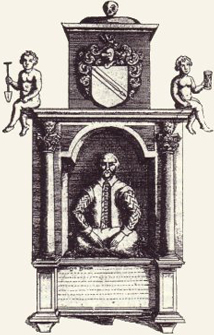

"....Your name from hence immortal life shall have, Though I, once gone, to all the world must die:.."
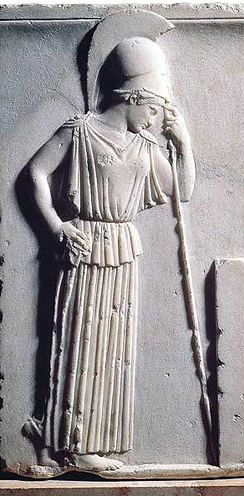
{see C I P H E R ! - link below}
Similarities are also found in SHAKESPEARE and the METAMORPHOSES attributed to Golding (Vere's Latin-fluent uncle) - the radical change to Golding's style could indicate that the translation was a collaboration.
He also made an extended foreign tour (over a year) in the VERY PLACES where the 14 'Italian' Shakespeare plays are set... returning in 1576 'the Italian Earl' funded his own acting troupe.
HIGHLY SPECIFIC EVENTS in various Plays - Love's Labour's Lost, Measure for Measure, Romeo & Juliet, Twelfth Night, King Lear, The Tempest, As You Like It... seem to mirror real events of De Vere's life, for instance:
Hamlet / All's Well that Ends Well plot elements - may relate to the mysterious death of Vere's father John in 1562, and resultant loss of Estates - like 'Bertram', he became a young ward of the Crown; impatient to travel, refusing to cohabit with a young wife... Like 'Hamlet', he was attacked by pirates after meeting soldiers, had a 'falling-out over tennis'... the 'Yorick' discourse could be a lament to Will Somer, comic-actor associated with the 16th Earl's acting troupe, et cetera.
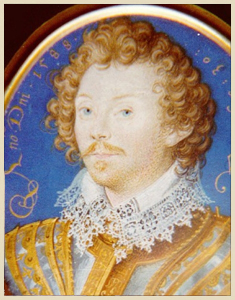
Hamlet, and other plays (Richard III, etc.) contain potential CHARACTERISATIONS of the Court - people whom Vere personally knew - including critical/satirical 'realisations' of the government (ref., the power-hungry Cecils).
...3 Shakespeare plays refer to the page in Lyly's Latin Grammar containing the text {'Eduardus is my proper name'}.
The references in Titus Andronicus, Merry Wives and Henry IV are incongruous and otherwise inessential to the plots.
Many contemporary dedications cite the Earl as the pre-eminent playwrite /arts patron of the time - just one is known to have been made to 'Shakespeare': "...if doings could be made public / Vere merits a silver pen / best for comedie, etc." ...so where did all his plays go?
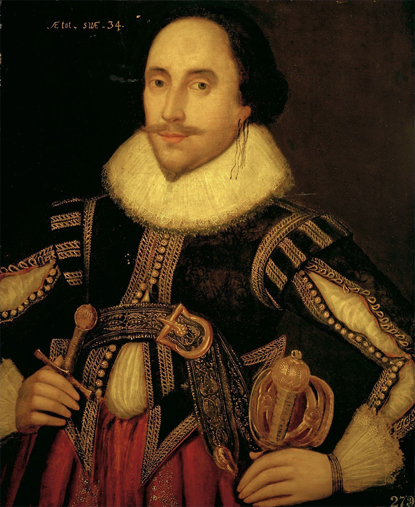
Finally, at Hampton Court, there is an 'Anonymous' portrait, linked via legend with Shakespeare....
"Why write I still all one, ever the same...
that every word doth almost tell my name?"
Thanks to The Royal Collection Trust /
© Her Majesty Queen Elizabeth II 2013